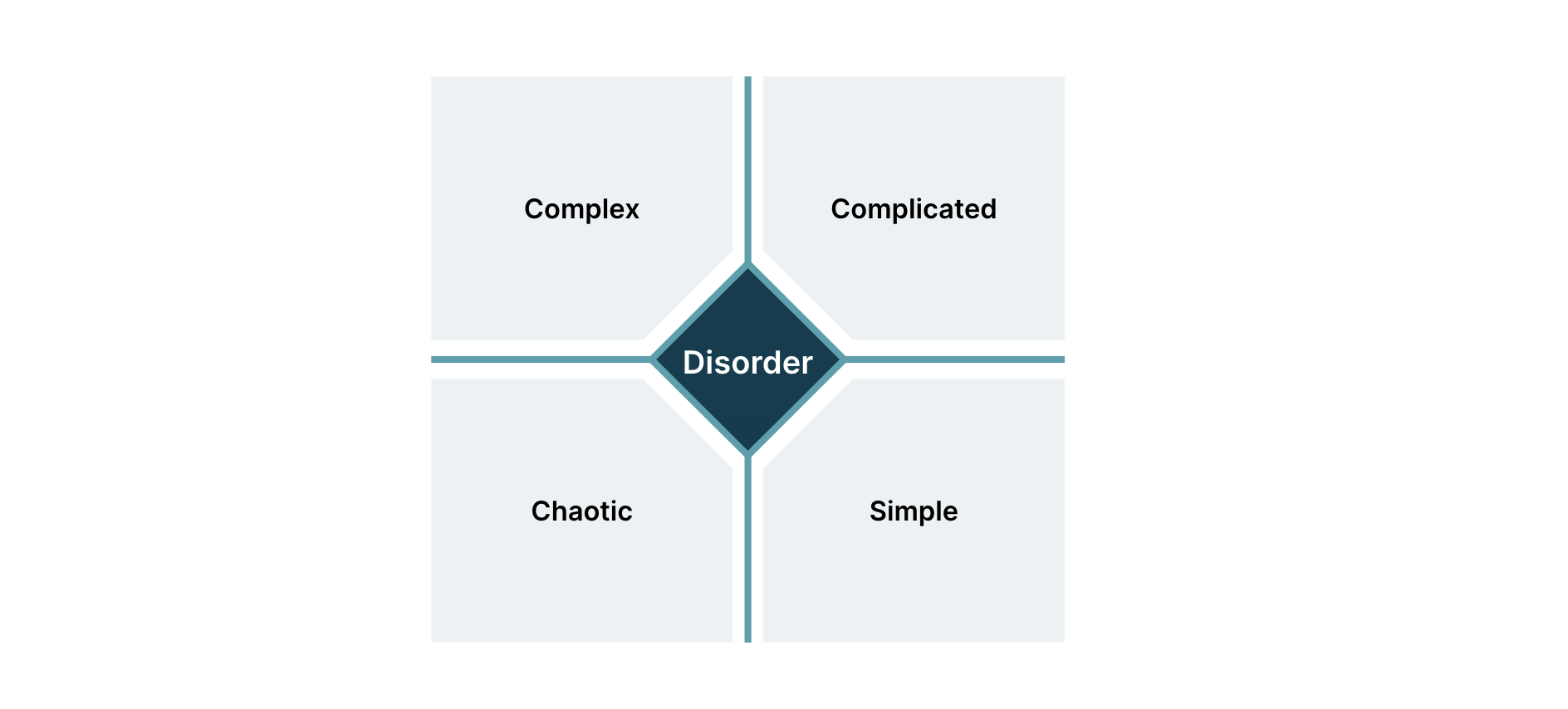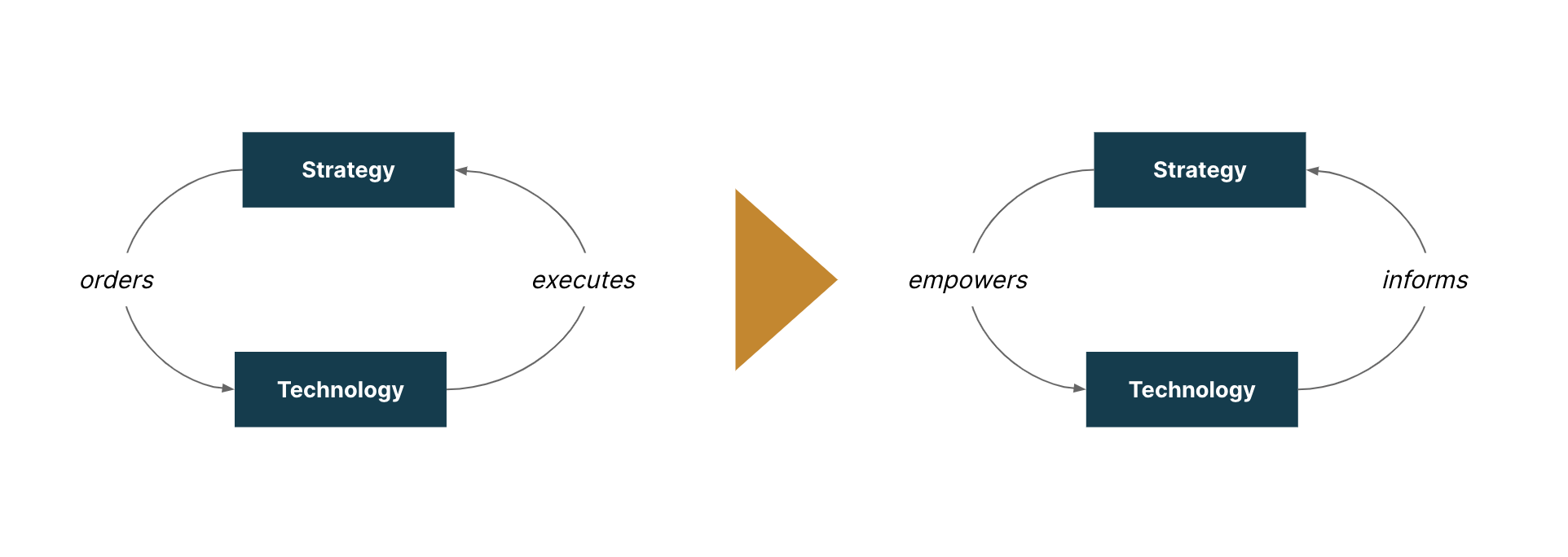Digital transformation can be described in many ways, but at its core it is about a shift from using digital technologies in a supporting or enabling role to using it to drive business strategy. While the process has many challenges, one of the most fundamental — but often overlooked — is what it means for the organization’s talent and culture.
As the sphere of the digital becomes intertwined with unlocking commercial advantage and growth, digital work itself will necessarily have to become more entrepreneurial; it will need to be aimed at actively opening up new opportunities rather than just supporting their pursuit in a purely operational manner.
In this series of blog posts I’ll explore how digital work is changing and what this means for individuals, leaders and organizations. In this first part, I’ll set some context about how digital transformation has changed the types of problems that digital and technology teams are now addressing and outline some of the emerging trends that will define their future in the medium-term.
Understanding the changing nature of digital work through the Cynefin model
One way of understanding the shift in the nature of digital work is by viewing it through the lens of Dave Snowden’s Cynefin model. This is a model that characterizes different types of problem spaces to aid strategic decision-making; its intended purpose is that if you can identify problems or challenges by “type” you can respond to them appropriately. Used in this particular context it illustrates how, in organizations that have undergone digital transformation, the problems with which digital work is concerned shifts into the realm of complexity.
Cynefin categorizes complexity in four ways: it can be simple (easily understood by observing consistently repeated patterns), complicated (predictable yet requiring expertise to be understood and navigated), complex (unpredictable and difficult to define and grasp) and chaotic (devoid of any patterns or coherence, requiring an instinctive or creative response rather than an analytical one).
Prior to digital transformation becoming the norm in business, digital functions — what might have typically been referred to as “IT” — were largely confined to the “simple” and “complicated” domains of the Cynefin model. In other words, it was oriented towards predictable problems and used to aid operations and execution. Take something like resource planning or scheduling — these are important, of course, but they are ultimately ways of codifying predictable tasks.


So, to reiterate the core thesis of this series: to operate in complex-chaotic domains, the “digital” part of the organization must be as entrepreneurial as the business strategy part of the organization. And to do that, digital workers themselves need to adopt a more entrepreneurial mindset as well.


Navigating shifts in the technology landscape
With technology/digital work playing a more important part in driving business strategy and opening up opportunities for growth and innovation, it’s worth considering some core shifts in the landscape. While they won’t be equally applicable to every organization, they are nevertheless broad trends that offer a loose path forward for technology teams to consider how they might enable transformative and strategic change. Doing so will also help us to understand what types of skills and knowledge the future of digital work requires.
From Projects to Products and Platforms
One of the fundamental shifts that enterprises need to make to embrace digital is moving from projects to products and platforms. Doing this will likely require changes to your operating model, taking in everything from funding to capabilities and team structures.
This means technology organization will need to be structured in the form of long-lived teams with cross-functional capabilities. Long-lived teams need to be funded in a different way than time-bound project teams with emphasis on outcomes over output.
Data-driven intelligence in all digital assets
It’s a truism that modern digital systems have led to a proliferation of data. But it’s one that nevertheless requires a response from businesses. With a wealth of data now available to even modestly sized organizations — about customers, operations, and suppliers to name just a few — technology teams will necessarily play a vital role in turning this data into a goldmine of insights. This will ultimately lead to improvements in a diverse range of areas, from operations to marketing strategy.
There’s a significant competitive advantage at stake here to organizations that can leverage data successfully — this can’t be done without a skilled and empowered digital workforce.
A new paradigm of interactions
Although the screen has characterized decades of human-machine interaction, in recent years that has started to change: conversational UI, for example, now makes it possible for users to interact with machines by using their voices. This has huge implications for user/customer experiences — it means that technology teams are now playing an important role in how those interactions take place; they are not only facilitating customer experiences, but rather determining what they might look like in the years to come.
Blurring the boundaries of the physical and digital
Alongside innovations in human-machine interaction, advances in augmented and extended reality will also open up new opportunities for organizations to redefine how digital products are integrated into the physical. Just as digital transformation has brought technology and business ever closer together, emerging technologies will also bring together the physical and the virtual.
This means organizations will need to think beyond established disciplines like web and mobile development. If you’re a retailer, for example, the future of your business might not necessarily lie with a new team of web or mobile developers constructing an e-commerce site or application (as beneficial as those things can be) — instead, it might require a more radical rethink about what an in-store experience looks like; one, perhaps, where digital features and functionalities sit alongside your bricks and mortar infrastructure.
What about business as usual?
It’s important to note that while new digital work may be strategic or entrepreneurial in nature, lying in Cynefin’s “complex” domain, the regular work of technology doesn't cease to exist.
There is, after all, a tremendous amount of software already built and shipped that still needs to be supported and enhanced. There are also new “simple” and “complicated” problems — these all need solutions.
The need for a fundamental shift
To understand how fundamental this shift is, imagine “digital” to be the electricity of the 21st century. Imagine the vision and efforts and change management required to move from coal-powered factories and devices to ones powered by electricity! This is the reason why digital transformation is difficult.
It’s clear that a fundamental shift is required. But while it’s tempting to see this shift as a purely technological one, without addressing changes in talent and culture, not only will digital transformation projects prove difficult, they also won’t be sustainable; they’ll fail to make an impact. So, with a new understanding of the nature of digital work, we can next explore the kind of talent and culture that an aspiring digital organization should aim for.
Disclaimer: The statements and opinions expressed in this article are those of the author(s) and do not necessarily reflect the positions of Thoughtworks.


















